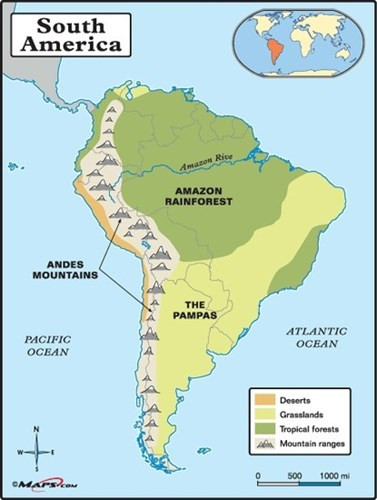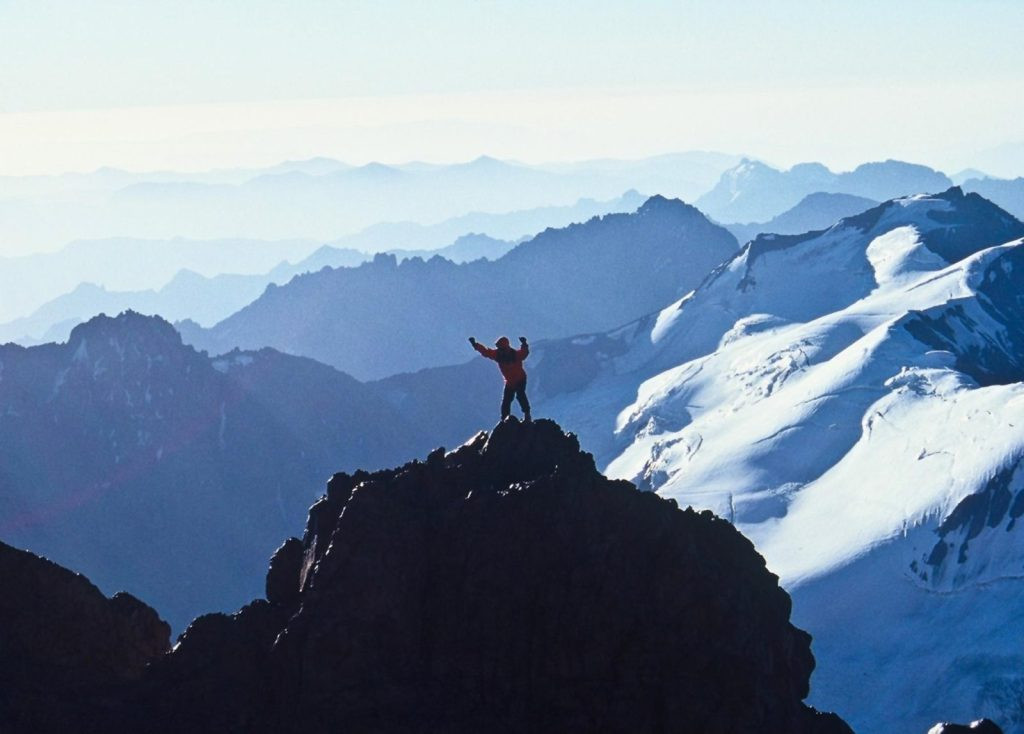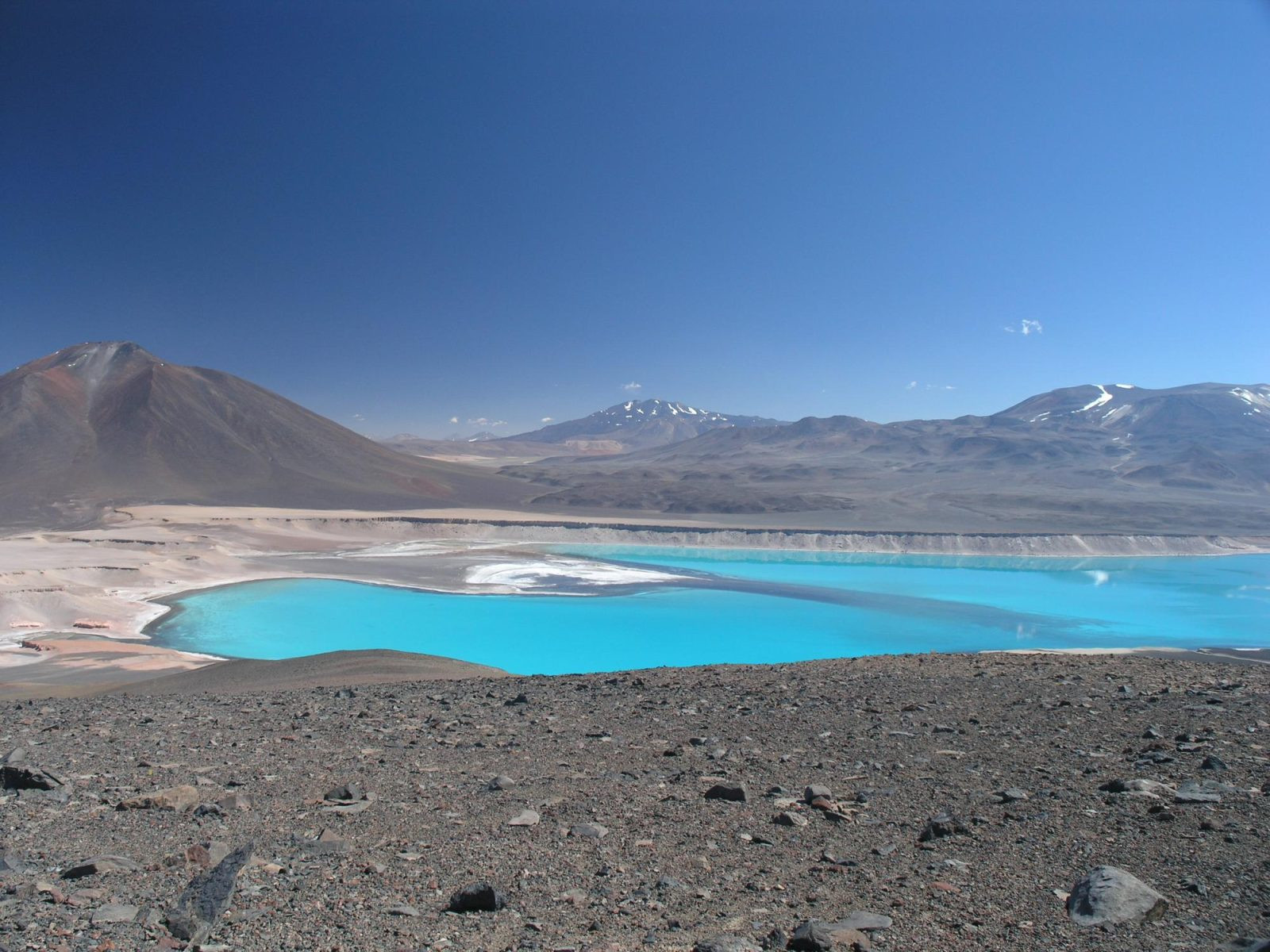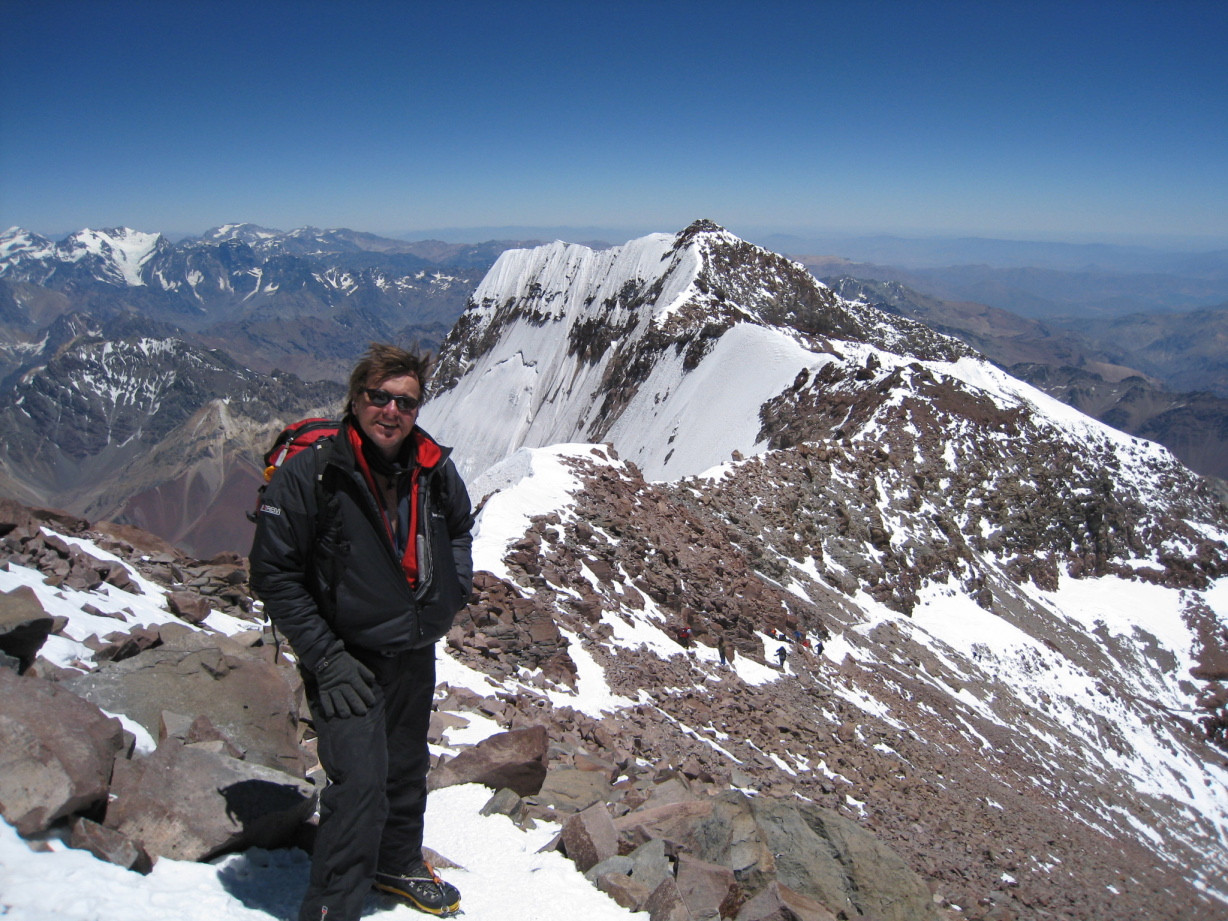The Andes Mountains, a majestic and formidable range, stand as the backbone of South America. Stretching along the continent’s western edge, these mountains are not only a geographical marvel but also a region rich in biodiversity, history, and adventure. If you’re wondering, “Where Are The Andes Mountains?” you’ve come to the right place to discover everything about this incredible natural wonder.
Unveiling the Location of the Andes Mountains
The Andes Mountains are located along the western edge of South America. Imagine a line drawn from the northernmost point of Venezuela all the way down to the southern tip of Chile. This vast stretch, hugging the Pacific coast, is where the Andes majestically rise. They traverse an impressive seven countries: Venezuela, Colombia, Ecuador, Peru, Bolivia, Chile, and Argentina, shaping the landscape and influencing the cultures of these Andean nations.
 andes map
andes map
Length and Breadth: Understanding the Andes Range
As the world’s longest continental mountain range, the Andes stretch for approximately 9,000 kilometers (5,592 miles). To put that into perspective, that’s longer than the distance from New York to London! This continuous chain of highlands runs along the western coast of South America, creating diverse landscapes and ecosystems.
The width of the Andes varies considerably, ranging from 200 km (120 miles) to 700 km (430 miles). The average height is an impressive 4,000 meters (13,000 feet). Along its immense length, the Andes are divided into several ranges, most notably the Cordillera Oriental (Eastern Range) and the Cordillera Occidental (Western Range). These ranges are often separated by intermediate depressions, creating valleys and plateaus within the mountain system.
Altitude and Peaks: Reaching for the Sky in the Andes
While the Andes are surpassed in height only by the Himalayas and their associated ranges, their peaks are still breathtakingly high. The average elevation across the Andes is around 3,962 meters (13,000 feet).
Mount Aconcagua, situated in Argentina, claims the title of the highest peak in both the Andes and the Western Hemisphere, soaring to 6,962 meters (22,841 feet) above sea level. This colossal mountain is a major draw for mountaineers worldwide.
Chimborazo in Ecuador, a dormant volcano, holds a unique distinction. Its summit is considered the point on Earth farthest from the Earth’s center due to the planet’s equatorial bulge. While its actual height is 6,263m (20,548 feet), its location makes it truly stand out.
Other notable Andean peaks include:
- Ojos del Salado (Chile/Argentina): The world’s highest active volcano and second highest Andean peak at 6,893m.
- Huascarán (Peru): Peru’s highest peak and the third highest in the Americas, reaching 6,768m.
- Yerupajá (Peru): Known for its challenging mountaineering routes, standing at 6,617m.
- Monte Pissis (Argentina): The third highest peak in the Andes at 6,793m, another volcanic giant.
Climate Zones: The Andes’ Diverse Weather Patterns
The Andes Mountains act as a significant climatic barrier, profoundly influencing the weather patterns of South America. They create a dramatic rain shadow effect and contribute to a wide range of climate zones across the continent.
- Northern Andes: Typically experience a rainy and warm climate.
- Central Andes (Eastern Part): Also characterized by wet conditions.
- Southwestern Andes: Receives significant rainfall.
- Western Andes (Northern Chile): Dominated by the extremely arid Atacama Desert, one of the driest places on Earth.
- Eastern Plains of Argentina: Lie in the rain shadow of the Andes, resulting in a very dry climate.
This climatic diversity contributes to the incredible biodiversity found across the Andes regions.
Geological History: Millions of Years in the Making
The Andes are geologically young mountains, estimated to be over 50 million years old. Their formation is a result of the ongoing collision between the South American and Pacific tectonic plates. This collision is an example of plate tectonics at work, where immense forces shape the Earth’s surface over millions of years.
The formation process began during the Triassic and Jurassic periods when the supercontinent Pangea started to break apart. The Andes began to take their present form during the Cretaceous period through a complex process of uplifting, faulting, and folding of ancient sedimentary and metamorphic rocks. The rise of the Andes has been a dynamic process, with different regions experiencing varying degrees of tectonic activity and erosion over time.
Andean Flora: A World of Unique Plants
The Andes are a biodiversity hotspot, home to approximately 30,000 species of vascular plants. This includes a vast array of plant types, from mosses and ferns to conifers and flowering plants.
One notable plant is the Cinchona pubescens tree, a source of quinine, a vital medicine used to treat malaria. This tree is found throughout the Andes, extending as far south as Bolivia.
The Andes are also the origin of important crops like tobacco and potatoes, which have become staples worldwide.
High-altitude Polylepis forests and woodlands, composed of trees known locally as Quenua and Yagual, thrive in the Andean regions of Colombia, Ecuador, Peru, Bolivia, and Chile, reaching elevations up to 4,500 meters (14,760 feet).
Andean Agriculture: Crops of the Highlands
Agriculture in the Andes is adapted to the challenging high-altitude environment. In the valleys, maize is a staple crop, alongside other nutrient-rich foods such as Andean grains like quinoa and amaranth. Legumes such as beans and lupins, and root vegetables like arracacha, yacón, and chagos are also cultivated.
Importantly, the Andes are the birthplace of tomatoes and potatoes, two of the most globally significant food crops. Peru alone boasts at least 3,800 different varieties of potatoes, showcasing the incredible agricultural diversity of the region.
Coca leaves, native to the western Andean slopes, are also significant. Coca tea is a traditional beverage in the high Andes, valued for its ability to alleviate altitude sickness symptoms.
Andean Fauna: Wildlife in the Heights
The Andes Mountains are home to an estimated 3,700 animal species, including a rich variety of mammals, birds, reptiles, fish, and amphibians.
High-altitude mammals, such as llamas, alpacas, vicuñas, and guanacos, have adapted to the harsh environment with thick, woolly fur for insulation. The Andean condor, one of the world’s largest flying birds, soars through the skies. Colorful Andean flamingos inhabit high-altitude lakes.
The diverse ecosystems of the Andes, from cloud forests to high-altitude grasslands, support a wide array of animal life.
Mineral Wealth: Riches within the Mountains
The Andes are incredibly rich in mineral resources, making the region a major contributor to global mineral production. Andean mines account for a significant portion of the world’s production of:
- Copper (over 45%)
- Silver (nearly 30%)
- Lead
- Zinc
- Gold
- Various industrial minerals and chemicals
This mineral wealth has played a crucial role in the economies of Andean countries for centuries.
Population and Culture: Life in the Andes
An estimated 84.5 million people reside in the Andes region, with 44% of the population of Andean countries living within the mountains. Major cities are located within the Andes, and it’s estimated that about a third of South America’s population lives in or near the Andes.
The inhabitants of the Ecuadorian Andes are predominantly Quechua speakers and mestizos. In southern Ecuador, smaller groups of Cañaris reside, and the Salasacas are found in the north. Agriculture, focused on crops like corn, potatoes, and broad beans, is the primary occupation. Some indigenous communities also engage in traditional crafts like ceramics and weaving.
Best Time to Visit: Planning Your Andean Adventure
The best time to visit the Andes largely depends on your specific destination and interests. Generally, the dry season, from May to October, is considered the most favorable time for travel. During this period, you can expect cooler temperatures (especially at higher altitudes and further south), less rainfall, and clearer skies, offering breathtaking views.
December to March is the rainy season in the Andes.
However, temperatures in the Andes are more strongly influenced by altitude than by the time of year. Regardless of when you visit, be prepared for varying conditions and pack accordingly.
The Andes are a premier travel destination in South America, especially for adventure enthusiasts. The mountains offer a vast playground for activities like:
- Mountain climbing
- Stargazing
- Hiking and trekking
- Cycling
- White water rafting
- Skiing
- Horseback riding
Whether you’re seeking a challenging climb up Aconcagua or a scenic trek through the Cordillera Huayhuash, the Andes promise unforgettable experiences.
Aconcagua is a must-climb for those aiming to reach the highest points on each continent. For any questions about exploring the Andes, or to explore adventure options, please contact Adventure Alternative or explore their website. You might also be interested in resources on Aconcagua routes, Aconcagua weather, and health and altitude.
 An awe-inspiring view of the Andes, capturing the vastness and beauty of the mountain range as a silhouetted figure gazes at the landscape.
An awe-inspiring view of the Andes, capturing the vastness and beauty of the mountain range as a silhouetted figure gazes at the landscape.
Adventure Alternative’s MD Gavin Bate, exploring the Andes.
Famous Peaks in the Andes: A Climber’s Paradise
The Andes boast a collection of iconic peaks, each offering unique challenges and stunning vistas:
- Aconcagua, Argentina: The highest in the Western Hemisphere (6,961m).
- Ojos del Salado, Chile/Argentina: World’s highest volcano (6,893m).
- Chimborazo, Ecuador: Farthest point from Earth’s center (6,263m).
- Huascarán, Peru: Highest in Peru and 3rd highest in the Americas (6,768m).
- Yerupajá, Peru: A significant mountaineering challenge (6,617m).
- Mercedario, Argentina: High peak in the Cordillera de la Ramada (6,720m).
- Illimani, Bolivia: Popular peak near La Paz (6,438m).
- Coropuna, Peru: High volcano and Peru’s third-highest peak (6,425m).
- Tupungato, Argentina/Chile: Popular and less technically challenging (6,570m).
- Monte Pissis, Argentina: Third highest in the Andes (6,793m).
- Ampato, Peru: Dormant volcano, famous for the Inca mummy Juanita (6,288m).
Famous Treks in the Andes: Exploring on Foot
For trekkers, the Andes offer a diverse range of trails, from multi-day expeditions to shorter day hikes:
Argentina
- Aconcagua Trek
- El Chaltén Trails
- Villa O’Higgins to El Chaltén
- Sierra de las Quijadas National Park
Colombia
- Cocora Valley
- Ciudad Perdida (Lost City) Trek
Chile
- Torres del Paine Circuit
Ecuador
- Cotopaxi Volcano
- Quilotoa Loop
Brazil
- Caminho das Missões (While primarily in Brazil, it offers Andean foothills experiences)
Peru
- Cordillera Huayhuash
- Santa Cruz Trek
- Inca Trail
- Ausangate Trek
- Choquequirao Trek
- Salkantay Trek
- Laguna 69
- Huayhuash Circuit
- Colca Canyon
Great Adventures Await in the Andes!
The Andes Mountains are more than just a mountain range; they are a world of adventure, discovery, and natural beauty. From towering peaks to ancient cultures, the Andes offer an unparalleled travel experience.
 A stunning turquoise lagoon nestled amidst the rugged terrain of the Andes, showcasing the breathtaking landscapes of Ojos del Salado.
A stunning turquoise lagoon nestled amidst the rugged terrain of the Andes, showcasing the breathtaking landscapes of Ojos del Salado.
Mount Ojos del Salado, 6893m
Mount Ojos del Salado, at 6893m, is not only the highest mountain in Chile but also the world’s highest active volcano, presenting a unique and challenging adventure.
| Days | 15 |
|---|---|
| Altitude | 6893 m |
| Challenge | Grade 2B |
Trip Price £2895
View this Trip
 A climber’s perspective just below the summit of Aconcagua, capturing the challenging terrain and the anticipation of reaching South America’s highest peak.
A climber’s perspective just below the summit of Aconcagua, capturing the challenging terrain and the anticipation of reaching South America’s highest peak.
Mount Aconcagua Horcones Route
The Horcones Route on Mount Aconcagua offers a demanding expedition to the highest peak in South America. While not extremely technical, it involves significant hiking across scree and rock, with snow and ice at higher elevations.
| Days | 19 |
|---|---|
| Altitude | 6962 m |
| Distance | 60 km |
| Challenge | Strenuous |
Trip Price £3395.00
View this Trip
 Mountaineers on a snowy section of Huayna Potosi, highlighting the mountaineering opportunities in the Bolivian Andes.
Mountaineers on a snowy section of Huayna Potosi, highlighting the mountaineering opportunities in the Bolivian Andes.
Huayna Potosi, Pequeno Alpamayo
This expedition to Huayna Potosi and Pequeno Alpamayo provides an excellent introduction to mountaineering in Latin America. These popular peaks offer rewarding climbs, with the option to extend the adventure to the more challenging Illimani.
| Days | 16 |
|---|---|
| Altitude | 6088 m |
| Challenge | Intermediate |
Trip Price £2,695
View this Trip
OTHER GREAT PEAKS AND TREKS WITH ADVENTURE ALTERNATIVE OUTSIDE OF THE ANDES
Mount Kilimanjaro
Mount Everest
Mount Kenya
Trek to Everest Base Camp
